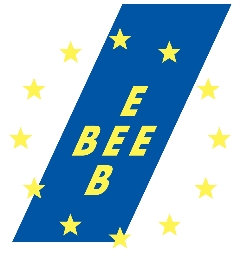Medical and environmental groups are alarmed by possible reductions in public health and environmental protection standards within the Industrial Emissions Directive (IED), which is about to undergo a second reading in the European Parliament. They are concerned that ongoing discussions appear to be favouring short-sighted industry interests over public and environmental health [1].
Millions of Europeans suffer from chronic respiratory diseases daily - one of the leading causes of premature deaths in
”Many of these diseases are preventable, which is why medical and environmental groups have joined forces to tell EU regulators that the best control strategy from the standpoint of human health is to reduce the levels of all air pollutants,” said Prof. Nikos Siafakas, ERS President. “They must resist the call for unnecessary derogations from Best Available Techniques, excessive opt-outs and needless postponements.”
Best Available Techniques (BAT), agreed by industry, member states and NGOs, are the state of the art techniques which achieve a high level of protection for the environment whilst being economically and technically viable.
Emission Limit Values under pressure from industry
In 2001, the EU Large Combustion Plant Directive (LCPD) was revised to gradually limit pollution emitted from installations such as coal-fired power plants [2]. However, despite 15 years’ warning that a stricter nitrogen oxide Emission Limit Value (ELV) will apply from 2016, several EU countries and their power companies are yet arguing for more time. They also argue that without derogations new investment would move electricity supply towards more carbon-intensive technologies.
The health and environment groups point out, however, that this is a grossly oversimplified argument that overlooks the immediate environmental benefits of efficient new plants, the role of CO2 capture readiness requirements, the unlikelihood of coal being abandoned and the very considerable advantage of gas for load following intermittent renewable sources of energy. They point out that if the operators of large combustion plants make money by running these plants, then they should at least make the necessary economic investments to bring these plants in line with BAT.
Moreover, despite overwhelming evidence of the superiority of ELVs over trading schemes in achieving emission reductions, the EU power sector’s umbrella organisation Eurelectric is trying to remove the option of member states introducing requirements on greenhouse gas emissions from IPPC installations [3].
An unlevel playing field: Varied implementation between countries
The groups are also concerned about what appears to be an increasingly unlevel playing field between member states when it comes to applying BATs. “Implementation studies from the European Commission revealed that in some cases significant differences and shortcomings occur between how permits are applied between different EU member states. This not only creates an unlevel playing field for industry but also an uneven level of health and environmental protection for EU citizens, who ultimately pay the price," said Christian Schaible of EEB.
The IED is a litmus test for the Europe 2020 strategy and its commitment towards smart, green growth. Environmental and health NGOs are calling for a realistic and ambitious IED that provides the predictability and equal treatment sorely needed for green, capital-intensive investments.
“We are in favour of a strong and effective directive that fosters and rewards the principle of innovation rather than derogation, and we are strongly encouraging MEPs to take the same line”, concluded Schaible.
Contacts
Christian Schaible, EEB Industrial Emissions Policy Officer, +3222891094, This email address is being protected from spambots. You need JavaScript enabled to view it.
Nadia Kamel, ERS EU Scientific Officer, +32 2 238 5364, This email address is being protected from spambots. You need JavaScript enabled to view it.
Simon Nazer, EEB Press Officer, +32 2289 1309, This email address is being protected from spambots. You need JavaScript enabled to view it.
Notes to editors
[1] The ongoing compromise discussions are going in the opposite direction of public and environmental health, providing for weakening of key provisions of the Directive, especially relating to level of flexibility for derogations (Art 15.4), and with specific derogations for the largest contributors of total industrial emissions, i.e. Large Combustion Plants. The general derogation clause needs considerable improvements: derogations should be the exception and limited to existing plants, not subject to a secondary cost-benefit assessment, based on proper EU-wide harmonised criteria and be publicly justified.
[2] It introduced emission limit values (ELVs) for existing plants for the first time, and provided derogations to ease the transition to these ELVs. These included derogations for plants with a limited remaining life, and a trading scheme in the form of a National Emission Reduction Plan (NERP). NERPs have proven to be much less effective in encouraging investments and reducing emissions, and discriminate against industry in those member states that required each plant to respect the ELVs.
The LCPD is now being re-cast with other EU industrial legislation into a comprehensive Industrial Emissions Directive. The Commission and the European Parliament’s rapporteur Holger Krahmer have concluded that existing plants have had their transition period and should no longer be exempted from the ELVs after 2015, as is already stipulated by the existing LCPD. Therefore limited life and NERP-type derogations can no longer be justified, as they are detrimental to public health, the environment and to the growth of green technology in the EU.
[3] Eurelectric has argued that CO2 limits for individual plants would not result in overall emission reductions because the power sector is covered by an EU-wide emission cap under the Emission Trading Scheme (ETS). However, future revisions of ETS caps are inevitably influenced by considerations of costs and feasibility of abatement. If CO2 emission ceilings are introduced in a Member State to enable construction of lower emission power plants and thus technological learning, it will make it easier to reduce emissions under the ETS.
About air pollutants
The six wide-spread pollutants from numerous and diverse sources considered harmful to public health and the environment, are: Nitrogen dioxide (NO2); Ozone (O3); Particulate Matter (PM), Sulphur dioxide (SO2): Carbon Monoxide (CO); and Lead (Pb). The approximately 45,000 IPPC installations in the EU are the emissions source of 83% of all Sulphur dioxide, 55% of all Volatile Organic Compounds, 38% of all Ammonia and 34% of all Nitrogen oxides.
About chronic respiratory diseases
According to the latest WHO estimates (2007), about 1 billion people in the world currently have chronic respiratory diseases (asthma, COPD, tuberculosis, rhinitis, cystic fibrosis, sleep apnea syndrome, and several other serious lung diseases). The global prevalence of respiratory disease is increasing in the whole world, particularly in children and the elderly. Managing the needs of a population with increasing longevity sets new challenges and a good air quality.
|
|












